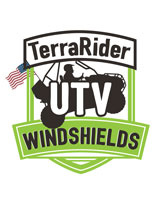2010-2013 KAWASAKI TERYX 2 SEATER TILTING UTV WINDSHIELD - FOR FACTORY HARD TOP (TK00141, TK00333 & TK00887)
Thank you for your review! We're glad to hear that you are satisfied with our Teryx windshield for your factory hard top. We strive to provide high-quality products and it means a lot to us to receive positive feedback from our customers. Thank you for choosing us for your UTV needs!
They were great! Got our new windshield within 3 days and it was way more than what we expected. It was very easy to install and fits perfect. Highly recommend buying and will buy again if needed. But I think it will last a very long time!
I ordered the wrong windshield and TerraRider sent me a return slip for the wrong one and sent me the correct windshield that fit perfect. Thanks for the help on getting the right part! Awesome service !
Easy install. Fits perfect. Price is great. Have bought from them in the past and will buy again.
Great product. Super easy to install and it works great. Installed by myself! Worked perfect!


